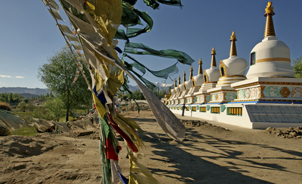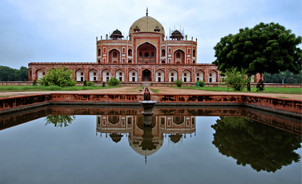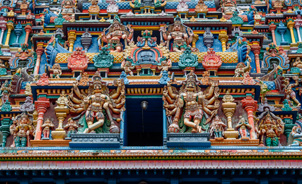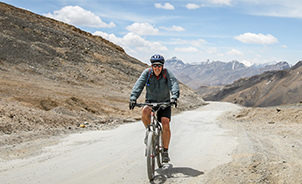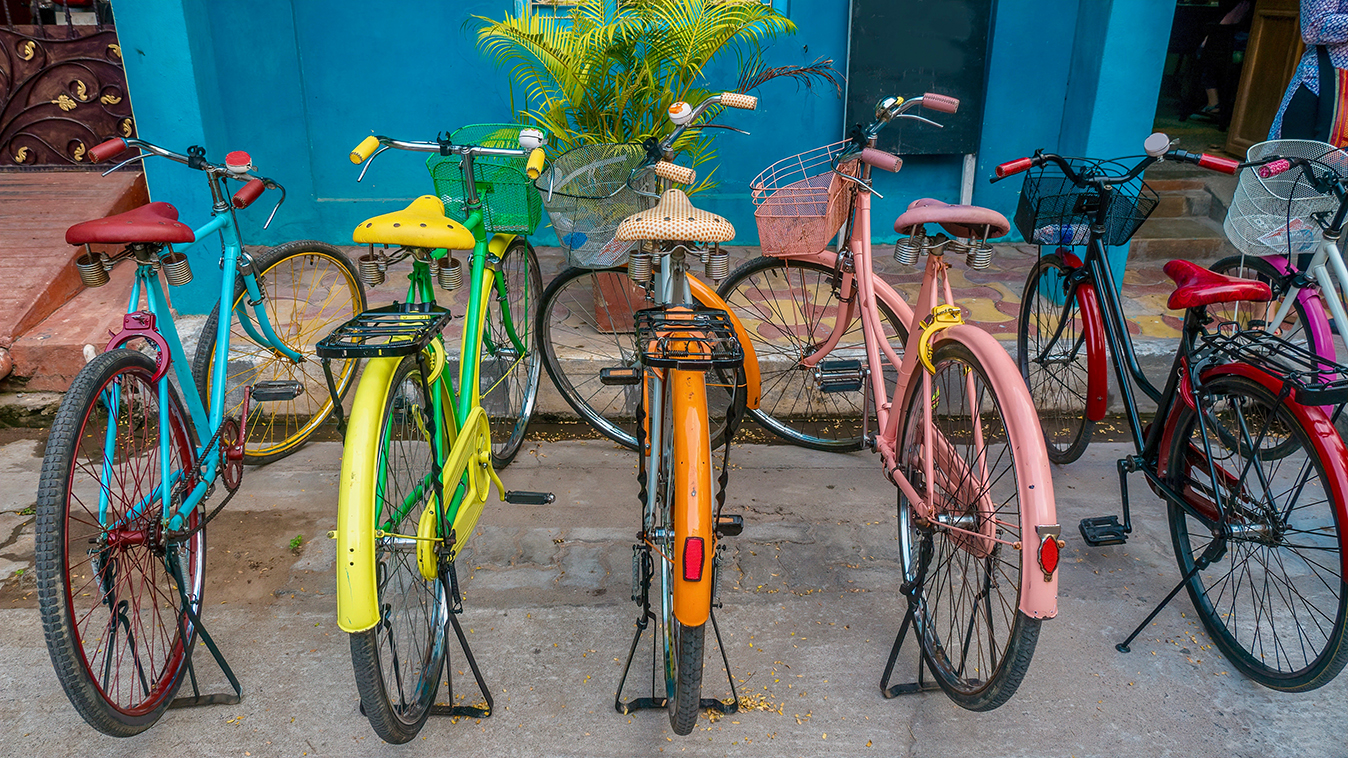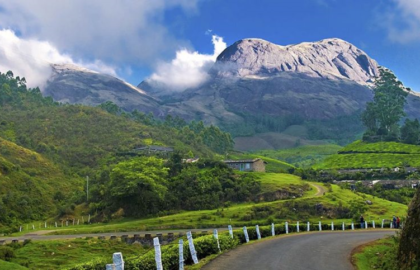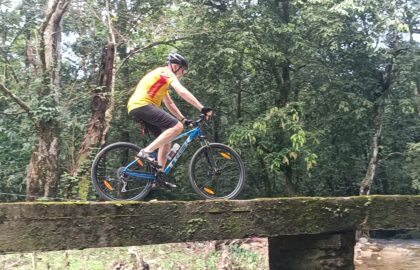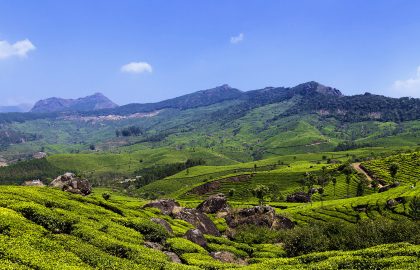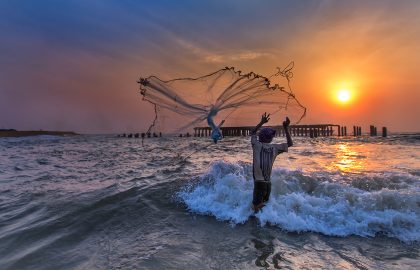Signing up for a two-week adventure across South India with Cycling in India was an experience of cultural immersion and breathtaking landscapes. Our mammoth cycling adventure began in Chennai and ended in Kochi, where we delved into the perfect blend of culture, food, landscapes, and the traditions of South India’s two most diverse states. We witnessed UNESCO World Heritage sites, rode along pristine beaches, and enjoyed the lush green landscapes. Along with cycling, we tasted the expansive cuisines of Tamil Nadu and Kerala, guided by our expert guides from Cycling in India. Some highlights were the houseboats, tea gardens, rice fields, and cardamom plantations that enriched our experience. Here is the detailed experience of our 14-day cycling tour from the East Coast to the West Coast of South India.
Day 1: Chennai to Mahabalipuram

Before our first day of cycling, we arrived in Chennai, where our guide from Cycling in India picked us up from the airport and checked us into our hotel for the night. That evening, we had a small briefing with our guide about our following days of cycling across South India. We even got our bikes checked by their expert technicians to ensure a smooth and hassle-free ride. The next morning, we began our cycling adventure on the East Coast Road (ECR) towards Mahabalipuram – a small town 50 km south of Chennai city that was founded by the Pallava dynasty between 7 and 8 BCE. It was a vital center of sea trade for centuries and a thriving hub of cultural and socio-economic ventures. Being a UNESCO World Heritage Site, Mahabalipuram consists of 100 structures spread over a few kilometers of land.
Day 2: Mahabalipuram to Pondicherry

Our second day of cycling in South India was a 95 km ride south to the former French colony of Pondicherry, now known as Puducherry. Now a Union Territory of India, Pondicherry is still famous for its colonial heritage in the form of architecture. Our ride to Pondicherry was on flat terrain without any climbing. However, the crosswinds from the Bay of Bengal made it a challenge to pedal. We were mesmerized by the scenic paddy fields, palm trees, and quaint fishing villages. We reached Pondicherry in the hot afternoon Sun, only to check into our hotel for lunch and have the rest of the day to rest and recover. We explored Pondicherry mostly on foot, coming across the famous Aurobindo Ashram – a haven for spiritual development and inner stability for individuals seeking a purpose in life and beyond. We also visited the famous Paradise and Serenity Beaches, known for their golden sands and outdoor activities.
Day 3: Exploring Pondicherry

Pondicherry, a former French colony is home to Tamil Nadu’s vibrant art scene and cafe culture. Stemming from French influences, the French Quarter is dazzled with beautiful French architecture with stunning colonial buildings, trendy boutiques, and lively cafes serving delicious croissants and other French delicacies. We rode around the town of Pondicherry along with other cyclists on their bicycles. Our ride around Pondicherry was extended by a visit to the famous Auroville, an experimental township dedicated to the vision of Sri Aurobindo – the founder of the Aurobindo Ashram and School. We even visited the famous Matrimandir, a monument that is a symbol of the Divine’s answer to man’s aspiration for perfection and also of peace, harmony, and enlightenment.
Day 4: Pondicherry to Thanjavur (via Karaikal and Kumbakonam)

The Cauvery Delta Region lies just south of Pondicherry within the limits of Thanjavur, Cuddalore, Kumbakonam, and Karaikal. One of the most fertile regions of South India, the CDZ is home to around 5 million people and the river Cauvery sustains the livelihood of the people here. Our cycling adventure on the 3rd day included cycling through countless paddy fields in and around Karaikal, a coastal town around 130 km south of Pondicherry. From Karaikal, we rode towards Kumbakonam aka. “The City of Temples”. Vibrant and culturally rich, Kumbakonam is steeped in the art, history, and culture of the Chola dynasty. Marveling at the beautiful structures, we decided to park our bicycles and take on a walking tour of the Nageswaran temple. Built by the Chola dynasty in the 3rd Century, the temple contains 3 tall gatehouses which lead to further halls and precincts within the temple premises. Adorned with beautifully crafted sculptures on the walls of the temple are the ancient gods and goddesses that were worshipped in ancient times by the Chola people.
It was only at 6pm we reached Thanjavur, checked into our hotels, and got a good night’s rest to continue riding tomorrow.
Day 5: Thanjavur to Pudukottai

Leaving the Cauvery Delta behind, we rode further inland towards the heart of South India. Our next stop on the 5th day was a small town called Pudukottai in Tamil Nadu. Known as a hub for handicrafts, Pudukottai has a long history and tradition of silk handicrafts. We explored the nearby temples from the outside before retiring for the day into our cozy homestays. Our next few days of cycling would get progressively more difficult due to the terrain but we were ready for the challenge.
Day 6: Pudukottai to Karaikudi
It was a short ride from Pudukottai to Chettinad the next morning. Karaikudi is famous for its origins in the Chettinad cuisine. Celebrated across South India, the Chettinad cuisine is a blend of spices and herbs that is added to almost all vegetarian and non-vegetarian dishes. As the vibrant tapestry of Dravidian culture unfolded before us, we embraced the rich culture of men in lungis, and women in sarees going about their daily lives. We visited the markets of Karaikudi and purchased some beautiful handicrafts and delicious dried spices. We also took part in a walking tour of the famous Chettinad mansion which is a mix of different architectural styles from neo-classical to art-nouveau. These palatial mansions were built in the 19th and 20th centuries by the Nattukotai Chettiars to celebrate their trade success in Southeast Asia. Our day in Karaikudi came to an end with a sumptuous dinner organized by Cycling in India which included a variety of dishes from the Chettinad cuisine.
Day 7: Karaikudi to Madurai

On day 7 of our Coast to Coast tour, we set our sights on Madurai, the temple city, eager to explore its cultural gems. Our first stop was the Madurai Meenakshi Amman Temple, a divine masterpiece established during the Sangam period, adorned with stunning architecture depicting gods and goddesses. Madurai, renowned for classical Carnatic music and Bharatnatyam dance, resonated with cultural richness centered around the 2,500-year-old temple, a symbol dear to the Tamil people. En route to Madurai, the Thirumayam Fort, a historic monument dating back to the 17th century, offers breathtaking scenic panoramas for photography enthusiasts. Our exploration extended to the Thiruparankundram Murugan Temple, an ancient ode to Lord Murugan, adding a spiritual touch to our cultural odyssey. Madurai unfolded further with visits to the Thirumalai Nayak Palace, a 17th-century architectural marvel blending Islamic and Dravidian styles, and the Gandhi Memorial Museum, a repository of artifacts and exhibits chronicling the life and legacy of Mahatma Gandhi.
Day 8: Madurai to Periyar

On the eighth day of our Coast to Coast cycling tour, our guides helped us load our bikes into the vehicle. When asked why, he said we would be traveling by car to the Cardamom Hills and then to Gudalur, which is about 25 km from Madurai. Cardamom Hills, nestled in the mountains of Kerala produce the largest amount of cardamom in India due to its favourable geographical conditions. These hills also host some of the largest coffee and tea plantations in India. We reached Cardamom Hills at the perfect time before the afternoon sun. The air smelled of a mix of herbs – cardamom, tea, and coffee, a smell that I would never forget. We sat for lunch at a local restaurant and continued towards Periyar in our support vehicle. We reached Gudalur at 4pm, got on our bikes, and climbed the steep roads towards Periyar. We passed by small hillside villages and their residents who waved out to us while sorting our tea leaves in their front yards. We finally reached Periyar, just after sunset, exhausted yet excited for the next few days.
Day 9: Exploring Periyar
Located high in the western Ghats in the Cardamom Hills and Pandalam Hills, the Periyar National Park is home to a diverse group of animals. The Asiatic elephant, Indian bison (gaur), and over 250 species of birds find a home in and around the regions of Periyar. Additionally, other mammals like the sambar, wild pig, Indian giant squirrel, Travancore flying squirrel, jungle cat, Dhole, sloth bear, Nilgiri tahr, lion-tailed macaque, Nilgiri langur, Salim Ali’s fruit bat, stripe-necked mongoose, and Nilgiri marten are found here. stretching towards Periyar are lined with spice plantations of cardamom, oregano, basil, mint, thyme, and even vanilla. The altitude and the crisp air make the cultivation of these spices and herbs easier. Additionally, the town hosts one of the largest auctions of cardamom in the city centre during the winter months adding to the commercial vibe of this small hilly forest town.
Day 10: Periyar to Kumarakom

Our longest day of cycling was relatively easy because of the first 40 kilometres. We rode mostly downhill, descending the hills of the Western Ghats amidst the lush green forests. One of my favorite moments was when I didn’t have to pedal for almost 20 km between Periyar and Mundakayam because the roads were not only smooth but they were all completely downhill! About 25 km before reaching Kumarakom, we stopped at Kottayam, a small city in Kerala flanked by the Western Ghats on the east and the Vembanad Lake and paddy fields of Kuttanad on the west. We stopped for lunch at the local cafe and continued towards Kumarakom. After lunch, we soon found ourselves under a thick canopy of trees that covered us from the harsh sunlight above. This canopy was part of the Kumarakom Bird Sanctuary. Spread over 14 hectares, and situated on the banks of Lake Vembanad, this sanctuary is home to large species of migratory birds that flock to this region from the distant mountains of the Himalayas and the vast expanse of Siberia. We were really happy to check in to our houseboat on the Vembanad Lake.
Day 11: Kumarakom to Alleppey – Boat tour
As we checked out of our houseboat in Kumarakom, we were again surprised to find out that we had a private boat for us to go to Alleppey – another backwaters town in Kerala, not too far from Kumarakom. Alleppey’s backwaters resembled the canals of Venice, slow-flowing waters with thousands of people on boats going about their business. At this time, we did not miss our cycles, we were happy to be on the boat relaxed and rejuvenated from cycling through the heart of south India. Cruising through the backwaters around Alleppey, the houseboat rows gently up the water past quaint villages, rice paddy fields, churches, and old houses. Our boat ride took us to the nearby towns of Kuppapuram, Kainakry, Chennamkary, Nedumudy, and Pulinkunnu. These towns are known for some of the most nutritious and delicious seafood found in the waters around Alleppey and Kumarakom. By the evening, we retired to bed after a nice dinner party, excited to cycle to our final destination – Kochi.
Day 12: Alleppey to Fort Kochi
In what could’ve been our last day of cycling, we were finally on our way to Kochi. Just like the East Coast Road from Chennai to Mahabalipuram, the Alleppey Kochi Road is a straight 50 km road that follows the Arabian Sea. With nothing but the sea to witness on our left, we were filled with gratitude and self-accomplishment for our Coast to Coast cycling tour. As we reached Kochi, we rode into the city centre of Fort Kochi, a rich and diverse hub of art, culture, and heritage.
Day 13: Exploring Fort Kochi Our day in Kochi was full of exploration and discovery. It was our last of cycling and we cycled across the length and breadth of Fort Kochi visiting locations like The Chinese Fishing Nets, Kashi’s Art Cafe, Mattancherry and Jew Town, Princess Street, and the famous churches. As we cycled across the city, we were reminded of the last 12 days cycling across the width of south India, delving deep into the culture and landscape of a country that is so diverse.
There are lots of other interesting cycling route in South India starting from Karnataka to Kerala or Kerala to Tamilnadu. Please explore other interesting cycling routes of South India with Cycling in India.

